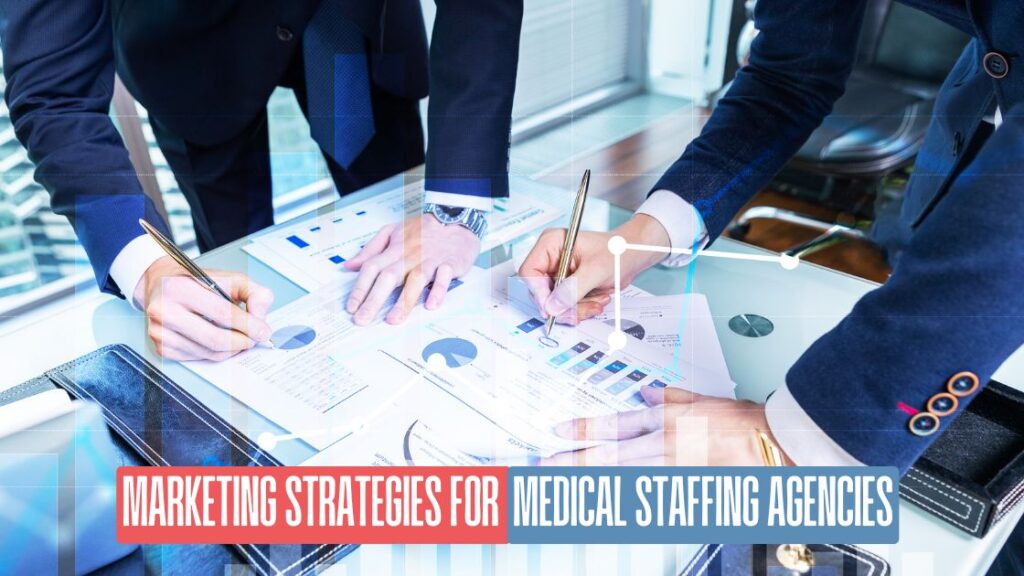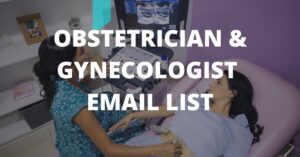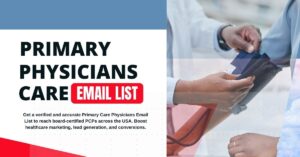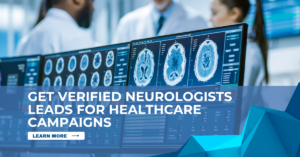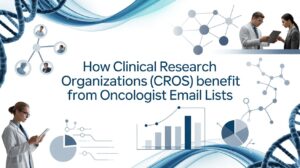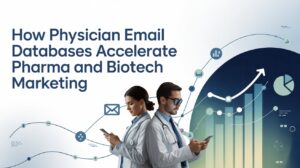In the ever-rising field of healthcare, the futuristic demand for qualified professionals continues to soar. But for medical staffing agencies, meeting that demand is not just about sourcing talent—it’s about making sure the right clients know you exist, trust your services, and are ready to partner with you. With so many agencies vying for attention in the same competitive market, strong marketing strategies are no longer optional; they are essential. In this blog, we explore the most impactful marketing strategies for medical staffing agencies and how each one can elevate your visibility and position your brand as a dependable B2B partner.
Establishing a Purpose-Driven Brand Identity
The identity of your brand is the first impression you offer to potential clients. It’s more than a logo or a color scheme—it’s the perception healthcare businesses form when they interact with your agency online or in person. For a medical staffing agency, this means conveying reliability, professionalism, and a strong understanding of the healthcare industry’s hiring needs. Your website should reflect this with clear navigation, professional imagery, service breakdowns, and well-articulated value propositions.
An impactful brand also includes thought leadership content—such as blogs, whitepapers, and case studies—that addresses the concerns of decision-makers in hospitals, clinics, and other healthcare networks. When these clients feel that your agency not only understands their pain points but has practical solutions, the trust barrier is significantly lowered. This emotional connection is what transforms a browsing visitor into a long-term client.
The Power of Targeted Email Campaigns
Email marketing, when executed with precision, is a cornerstone of lead generation for medical staffing agencies. The key lies in leveraging a high-quality, segmented database that allows you to personalize your messaging. Clients don’t want to receive blanket statements—they want to see that your agency understands their unique staffing challenges, whether they operate a busy urban ER or a quiet long-term care facility.
Crafting value-driven email sequences that speak directly to the client’s operational goals can significantly improve engagement. These emails should go beyond promoting services; they should offer insights, industry benchmarks, and even downloadable tools that aid in their decision-making process. Including testimonials, short success stories, or performance metrics from past placements can further reinforce your credibility. When email campaigns feel like a conversation rather than a sales pitch, the response rate improves dramatically.
Optimizing Your Online Presence Through SEO
Search Engine Optimization (SEO) remains a pivotal strategy in getting your agency found by those who need your services. Healthcare executives often begin their search for staffing solutions through online queries. Your job is to ensure your agency appears at the top of those search results.
This involves more than keyword stuffing; it’s about creating a content ecosystem that answers your clients’ questions. Long-form blog posts discussing challenges in clinical staffing, location-specific service pages, and FAQ sections addressing compliance and licensing concerns are all vital. These efforts should be reinforced by technical SEO strategies—such as fast loading times, mobile responsiveness, and secure site protocols—that ensure a seamless user experience. When potential clients find your content helpful and your site easy to navigate, they are more likely to reach out for your services.
Accelerating Visibility with Paid Advertising
While organic growth is essential, paid advertising can provide the momentum needed to reach short-term business goals. Google Ads, LinkedIn campaigns, and programmatic ads tailored to healthcare decision-makers can put your brand in front of the right audience at the right time. The effectiveness of this strategy lies in its specificity—targeting based on job titles, geographic regions, or even recent hiring activity.
Landing pages for paid campaigns should be meticulously crafted to align with the ad messaging. They should highlight your agency’s strengths—such as rapid placement times, rigorous vetting processes, or round-the-clock availability—and include clear calls-to-action. By using A/B testing and retargeting tools, your agency can continuously refine its messaging and increase conversion rates. Paid ads, when managed strategically, can bridge the gap between interest and inquiry almost instantly.
Creating Strategic Industry Partnerships
Building relationships with other vendors and service providers in the healthcare ecosystem can lead to unexpected but highly valuable opportunities. For example, compliance software providers, medical billing services, and telemedicine platforms often interact with the same decision-makers you’re targeting. By forming alliances or co-marketing initiatives with these companies, you can gain access to shared audiences.
These partnerships might involve joint webinars, co-branded content, or reciprocal referrals. Over time, they not only extend your reach but also enhance your agency’s credibility through association. Clients are more inclined to trust staffing agencies that are endorsed by, or affiliated with, reputable partners in the healthcare business infrastructure.
LinkedIn: The Professional Powerhouse
In the B2B space, few platforms hold as much weight as LinkedIn. It’s not just a digital resume hub; it’s a networking platform teeming with healthcare administrators, HR managers, and department heads—each of whom could be your next client. An active and strategic presence on LinkedIn can elevate your visibility and thought leadership.
Start by optimizing your company profile with relevant keywords, consistent branding, and a compelling overview. Regularly post content that resonates with your audience—staffing insights, hiring trends, or even behind-the-scenes looks at your recruitment process. Engaging in comment threads, joining healthcare staffing groups, and running targeted ad campaigns can expand your influence and bring in qualified leads. LinkedIn is especially valuable for building long-term relationships and nurturing trust, one connection at a time.
Offering Lead Magnets That Address Real Concerns
Lead magnets are one of the most effective ways to gather contact information from potential clients. But to work, they must offer genuine value. For medical staffing agencies, these can include industry-specific checklists, compliance guides, or workforce planning templates tailored to healthcare facilities.
When clients download these resources, they’re not just getting information—they’re beginning a relationship. This allows your agency to follow up with nurturing emails, customized solutions, and insights based on their expressed needs. Lead magnets that are well-designed and clearly branded can establish your agency as a helpful, proactive partner from the very first interaction.
Making Smart Moves with CRM and Analytics
Data should inform every aspect of your marketing strategy. Implementing a robust Customer Relationship Management (CRM) platform allows your team to track interactions, identify trends, and forecast client needs. This is especially useful when managing multi-channel campaigns across email, ads, and social media.
Analytics tools can show you which pages drive the most traffic, where users drop off, and which messages convert best. This real-time feedback helps your agency adapt and refine strategies quickly, ensuring that you are always aligned with client interests. A data-driven approach is not only more efficient—it demonstrates to prospects that you value precision and professionalism.
Leveraging Events to Build Trust and Brand Equity
Industry events—whether in-person trade shows or virtual summits—offer prime opportunities for face-to-face engagement with potential clients. These settings allow your agency to demonstrate its expertise in real time, through presentations, panel discussions, or booth interactions.
Preparation is key: bring polished marketing materials, success stories, and tools to collect leads efficiently. After the event, timely follow-ups are critical. Recap emails, personalized meeting requests, or even post-event content (like blogs or recap videos) can extend the impact of your participation. Events are not just for visibility—they are for credibility. And credibility drives conversions.
The Influence of Reviews and Social Proof
In a competitive industry, social proof can be the deciding factor between your agency and another. B2B buyers are just as influenced by peer opinions as consumers are. Make it easy for satisfied clients to leave reviews on platforms like Google and LinkedIn. Share these testimonials on your website and in email campaigns.
Beyond reviews, consider publishing client success stories or video testimonials. These offer concrete evidence of your ability to solve complex staffing challenges. Social proof doesn’t just validate your services—it gives hesitant prospects the confidence to move forward.
Conclusion
To succeed in today’s competitive landscape, medical staffing agencies must embrace marketing as a strategic function, not an afterthought. The most effective marketing strategies for medical staffing agencies combine digital tools, personalized outreach, data intelligence, and industry partnerships to create meaningful client connections. By investing in these approaches, your agency won’t just keep up—it will lead.
When your marketing reflects a deep understanding of healthcare operations and decision-maker priorities, you become more than a staffing vendor—you become a strategic partner. And that distinction is what turns opportunities into long-term contracts.
Visit our website Med Stream Data for more healthcare industry related information!

